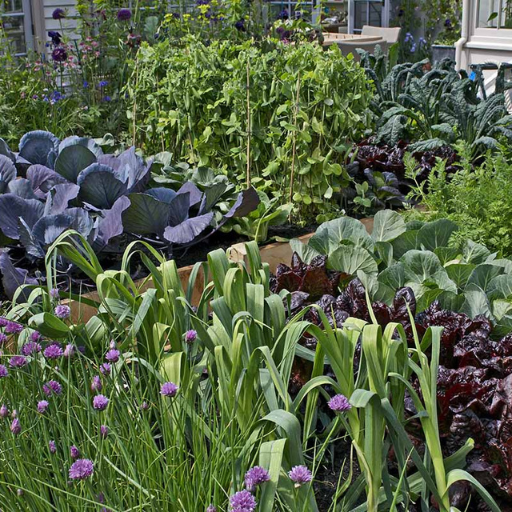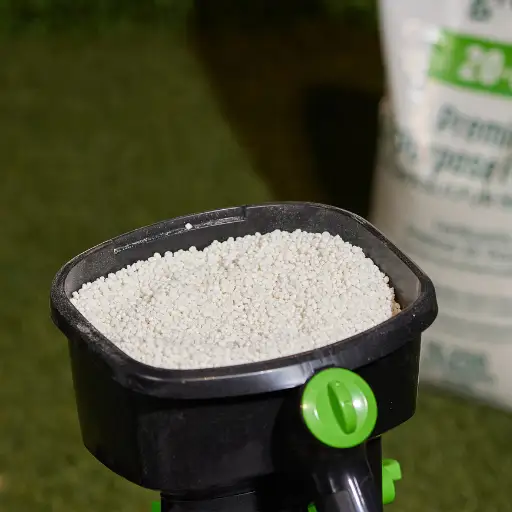A thriving lawn and garden require the right nutrients to stay lush and vibrant, and that’s where 6-20-20 fertilizer comes into play. This balanced formulation is ideal for supporting a wide range of plants by providing essential nutrients: nitrogen, phosphorus, and potassium, in specific proportions. Whether you’re an avid gardener or just starting on your landscaping journey, understanding the importance of these nutrients can empower you to make informed decisions for your outdoor space. In this blog, we’ll delve into the benefits of using 6-20-20 fertilizer, how it can enhance your lawn and garden, and tips for effective application. Join us as we explore how this fertilizer can be a game-changer in cultivating your green oasis.
What is 6-20-20 Fertilizer?
The Ratio of Nutrients
The fertilizer 6-20-20 shows the specific classification of nutrients where 6% consists of nitrogen, 20% phosphorus and the other 20% potassium. These entire elements are effectively necessary in achieving good health of all plants. For example, nitrogen assures greenery and therefore, it is actively involved in photosynthesis. Let’s take phosphorus, which helps in the development of the roots and production of flowers; it is helpful in making sure that the plants have a good base in the soil and it also helps in the production of blooms and fruits on the same plant. Potassium helps in enhancing generality to the plant by helping to fight off diseases, aiming at controlling the water and also helping the plant to adapt to harsh weather conditions. This approach works particularly well for the crops, which are in demand of secondary strengthening of roots, as well as flowering enhancement, while still keeping the green cover of the plants healthy.
Parts of a 6-20-20 Fertilizer
The 6-20-20 fertilizer contains three basic ingredients, contributing a different kind of benefit to the plants. The first is nitrogen, which is present only in 6%, having the role of enhancing the growth of leaves and retaining a healthy green coloration. The growth enabling nutrients covers “P” or the second portion for root and flower growth at 20 fraction. Put simply Phosphorus strengthens the base and frees flowering so crops with more flowers and fruits are expected. And the last one is potassium which retards or inhibits degradation of tissues basic substances is also at 20% aiding the general health of bracing the plants at their cell walls, water usage, and broadening the defense against any pathogenic attacks. These materials together ensure a better diet that is why 6-20-20 fertilizer when applied to crops promotes there healthy vigorous growth.
How it Benefits Plants
Balanced approach of the 6-20-20 fertilizer results in significant plant benefits as various plant growth requirements are sustainably met with due attention. Higher phosphorus content is beneficial for creating stronger roots which is a major advantage when growing crops or grass on professional turfs, since vigorous root systems are necessary for the plants to absorb nutrients and provide stability. The nitrogen part contributes to the development of thick and green leaves, especially important for high leaf boring plants like grasses and leafy vegetables. The potassium provided in the mixture is also useful in improving the health of the plants, thus increasing its disease resistance and water efficiency, which is particularly useful in drought and severe weather conditions. This formulation is good for both flowering plants and vegetables and claims to provide adequate yield as well as good flowering and general plant health.
Why Choose 6-20-20 Fertilizer for Your Lawn?
Improving Grass Growth
When it comes to achieving verdant and healthy lawns, the 6-20-20 fertilizer is the best option because of its high filters content, a factor necessary for root development and disease resistance. Enhancing root attention is efficiently done through the addition of phosphorus, which implements healthy and safe grass cover that utilizes available water and nutrients. At the same time, the potassium part of the composition helps grass in high-temperature or dry periods sustain moisture and strengthen the leaves of grasses. Such nutrient provision promotes strength and durability, which is why it is recommended to homeowners that aspire to have healthy green lawns.
Importance of Phosphorus in Lawn Care
Phosphorus is another important component in lawn care which is necessary for healthy beginner’s roots and efficient nutrient uptake by grasses. It is especially so when new lawns are put down, or when there is a need to rejuvenate shrinking sections of grass. The effect of phosphorus utilization is a translocate of energy within the plant which is necessary for the formation of nucleic acids which forms a constituent part of many important bodies of cells. Phosphorus is essential in all phases of plant development especially in processes of seeding and early growth because firm root systems are vital for the future of the plant and withstanding adverse conditions. Hence, phosphorus must be persistent for greens that may stand the test of time.
Hearing Lows and One as Above Problem to Other Fertilizer Options
The effectiveness of a 6-20-20 fertilizer in relation to other commonly used options has many sides to it. A common alternative option is 10-10-10 fertilizer that has been preferred by many for its balanced composition of nitrogen, phosphorus and potassium making it an all round option for general lawns. Nevertheless, it does not provide the extra push in phosphorus and potassium that is meant for rooting and stress resistance. Another possibility is 16-16-16, a fertilizer often favored for its relative balance amongst N, P, and K, and bestows no harm to other parts of a plant, but might not support grasses that afterwards have to be rescued to establish deep roots and resist wear and drought. Such fertilizer as 24-0-10 is also nitrogen-based focusing on green top growth. Anyway, such formulas do not support the roots as much as the 6-20-20 does. For one’s knowledge of the appropriate fertilizer largely depends on the particular lawn that one has which requires interpretation of soil test results and climatological orders before settling on the appropriate product.
How to Apply 6-20-20 Granular Fertilizer?

Proper Application Times
Within 6-20-20 granular fertilizer’s applications, correct timing is highly significant for healthy lawns. The ideal time for using this fertilizer is in the spring or fall. In this case, comes spring, it helps in rooting and gets the lawn ready for the active growth season and an application during fall promotes rooting as well as nutrient accrual for winter adaptation. The application should be done either after a wet condition such as rains or irrigation and in temperatures that are not too hot to avoid burning the nutrients, so that soil moisture is present. Observe the requirement for regional or climatic changes to program such applications effectively.
Recommended Application Rates
When using 6-20-20 granular fertilizer the normal rate of application is 5 to 7 pounds per 1000sq.ft to avoid geometric progression. Most rates allow for good root growth and the development of stress resistance with minimal risk of over fertilization which puts the lawn at risk. It is important to apply the fertilizer evenly over the entire lawn, and deep deep irrigation to eliminate patchy growth and irrigate the soil for effective nutrient use. They should also advise conducting the tests of the soil regularly in order to adjust for the particular nutrient needs of the lawn. Instructions from the manufacturers were supposed to be adhered to as well as the climatic conditions.
Watering After Application
Watering your lawn after applying 6-20-20 granular fertilizer is pivotal in realizing the effective nutrient uptake. Watering the yard after the application is generally advocated for. This ensures that the fertilizer becomes effective with the movement of the nutrients into the root zone. Do not apply too much water since doing so will carry the nutrients away with the water leading to wastage and runoff. Under normal circumstances, strive to give about one-quarter to one-half inch of water. In order to achieve equitable distribution, the water should be directed across the underlying surface continuously within applying areas. The correct application of water does not only enhance the intake of nutrients but also protects the lawn against fertilizer burn.
What are the Benefits of Using Starter Fertilizer?

Encouraging New Plant Growth
Starter fertilizers contain the right nutrient composition to aid root formation of new plants. The fertilizer combines nitrogen, phosphorus and potassium that help sustain the initial growth. Growth of the leaves is enhanced by nitrogen, phosphorus aids in establishment and growth of the roots while potassium increases general growth and ability to resist stress. Use of starter fertilizer helps in conditioning the soil with balanced nutrients and therefore avoids deficiencies which could slow down the establishment of newly planted seedlings or sod. It results in healthier plants that are more resistant to pests and diseases leading to a stronger garden or lawn.
Selecting the Appropriate Starter Fertilizer
Starter fertilizers must also consciously factor in the needs of the plants to be grown and the type of soil. Always look for starter fertilizers containing the right amount of nitrogen, phosphorus, and potassium to encourage healthy root system and plant growth. It wouldn’t hurt to use slow fertilizers to help the new plants. A soil test should be conducted to evaluate the level of nutrients needed and determine the pH levels so that the fertilizer used can be more efficient. Moreover, organic alternatives should be used for environmentally friendly gardening that improves soil fertility and protects the surroundings. Be careful to always adhere to the recommended rates of application from the product label to minimize excess fertilizers which are harmful to the growing plants and their surroundings.
Starter Fertilizer Application
Starter fertilizer is most appropriately used when planting seeds, sod, or young plants. This is, however, at the best time to guarantee that the moist soil has the necessary nutrients that are needed for young roots and shoots bearing good growth. It is usually recommended to place the fertilizers directly in the planting hole or mix them with soil before planting. For best results, make sure the soil is moist in order to help the uptake of the fertilizer, do not apply during heavy and hot sunshine as this may cause stress on young plants. Soil and plants should also be checked from time to time and these may suggest when to apply more fertilizers to encourage growth and health.
How Does 6-20-20 Fertilizer Affect Soil Health?

Elevating the Nutritional Status of the Soil
One such fertilizer is the 6-20-20, which performs better than other types of fertilizers since it addresses particular needs of the soil during the growing season through the addition of essential nutrients, which improves plant growth and soil as well. This fertilizer contains a high composition of phosphorus and potassium nutrients which are key in the growth of roots and in the health of the plant. While phosphorus encourages the development of roots and the transfer of energy throughout the plant, potassium helps the plant fight off diseases as well as control water within the plant. As a consequence of applying these nutrients in the balanced way, 6-20-20 fertilizers will be able to cure soil deficiency, help produce good healthy plants; improve the nutrient situation of the soil being cultivated as well. Following this, applying nutrients as demonstrated by soil test results would over time result in a more fertile as well as more productive growing environment.
Impact On Soil Microorganisms
The effect of 6-20-20 fertilizer may differ with the types of soil microorganisms; these are important in preserving soil quality and fertility. This specific blend provides a balance of nutritional elements that work towards stimulating the beneficial microorganisms’ growth due to the increased microbial activity. Root development is enhanced by the phosphorus and potassium concentrations in the fertilizer, which also brings along more root exudates which are a major food for the soil microbes. The proper abundance of microbial populations assists in nutrient cycles, decaying the organic constituents and improving the quality of the soils. Chemical fertilizer application beyond reasonable limits tends to break this stability and drain the abundance of certain microorganisms in soils. It is appropriate to adopt methods of application of clinical fertilizers to soil tests to ensure the complexion is maintained in enhancing the life of microbes which will boost the health of the soils and the plants.
Long Term Risks for Your Yard
Fertilizer with the composition of 6-20-20 has positivity toward the yard over a long period of time in that it will guarantee a constant and uniform provision of key nutrients. Plants fertilizer decreases the chances of phosphorus ineffectiveness by giving the plants a rich source of phosphates. That brings swathes of healthy plant growth, including stronger root systems and improved overall plant health. With time, it will help in the amelioration of the soil since it will improve the nutrient levels and help in the beneficial activities of the microorganisms which aid in breaking down nutrients and making them available for uptake. If applied as per the soil test recommendations, the fertility of the environment can be sustained and thus improving the health of plants, the quality of flower and the yield, and the ability to tolerate the stresses and diseases that may hamper the vitality of your yard hamper diseases has been strengthened.
Reference sources
- Southwest Select Starter Fertilizer 6-20-20: This source provides insights into how 6-20-20 fertilizer helps grass seed and sod develop roots and mature effectively.
- The Numbers on Fertilizer Labels, What They Mean: This article explains the significance of the numbers on fertilizer labels, including how nitrogen promotes green leafy growth, which is crucial for lush lawns.
- Fertilizer Numbers – What Do They Mean?: This source discusses how fertilizers stimulate root growth, hasten plant maturity, and promote the development of flowers, fruits, and seeds.
These resources should provide a solid foundation for understanding the benefits and applications of 6-20-20 fertilizer.
Frequently Asked Questions (FAQs)

Q: What are the benefits of utilizing 6-20-20 fertilizer?
A: Use of 6-20-20 fertilizer enhances the root systems of plants which is relevant considering phosphorus content is high in the fertilizer that is very important for healthy growth while a good amount of potassium is supplied and healthy plant growth as well as disease resistance are assured.
Q: Is 6-20-20 fertilizer a little bit fast or bit slow acting product?
A: 6-20-20 fertilizer can either be a quick-release or a slow-release fertilizer. Quick-release fertilizers release nutrients in bulk, while slow-release fertilizers make some nutrients available to the plants over a period of time.
Q: Regarding fertilizing plants with 6-20-20 three numbers fertilizer, how long is it suitable for me to do that say free of 6-20-20 fertilizer?
A: As a clean up, it smoly recommends application of 6-20-20 fertilizer at intervals of approximately 4 to 6 weeks during the growing season. This is to avoid depletion of nutrients in the soil.
Q: Are micronutrients present in 6-20-20 fertilizer?
A: 6-20-20 fertilizer seeks to achieve optimum levels of macronutrients such as nitrogen, phosphorus and potassium yet some specific formulations may have micronutrients such as iron and magnesium which are important for plants.
Q: Is it possible to utilize 6-20-20 fertilizer with organic fertilizers?
A: Yes, it is possible to make use of 6-20-20 fertilizer along with organic fertilizers. The only thing to keep in mind is the total amount of nutrients and avoid over fertilizing the plants.
Q: In which season, 6-20-20 fertilizer can be applied easily?
A: Spring and early summer are the best times for applying the 6-20-20 fertilizer, as the plants are in their growing phase. Thus, they will be able to use the nutrients throughout the entire growing season.







